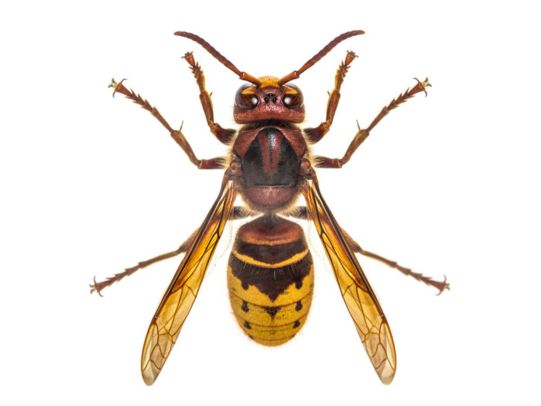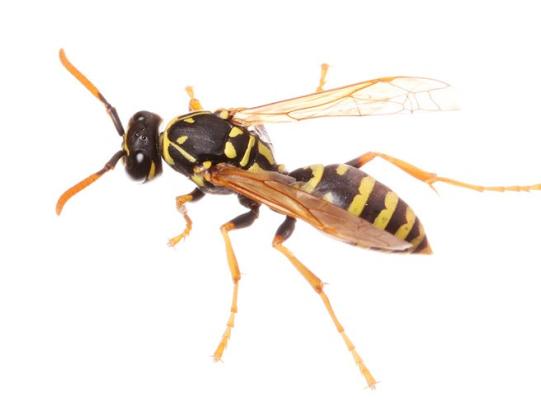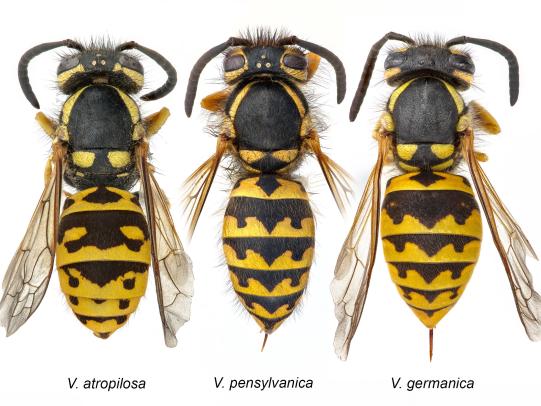When you see a buzzing, stinging insect in your yard, it's easy to lump hornets, wasps, and yellow jackets into the same category. They share many physical traits and can all deliver painful stings. Still, these insects are distinct in their behavior, appearance, and ecological roles. Correctly identifying whether you're dealing with a hornet, wasp, or yellow jacket is crucial for safety, especially if you need to remove a nest. This guide will explore the primary differences, behaviors, and safety tips for interacting with these stinging insects.
Before we dive into the distinctions, let's clarify what hornets, wasps, and yellow jackets are:
Understanding the specific type of insect you're dealing with is essential for safety and deciding how to manage or remove them. While all these insects can sting, they have unique behaviors and ecological roles.
Examining their physical characteristics is one of the easiest ways to differentiate these insects. Here's what to look for:
Hornets: Hornets are typically the largest of the three, ranging from 1 to 1.5 inches in length. They have a more robust, bulkier body than wasps and yellow jackets. Hornets are usually darker in color, with black and white or black and brown markings. The European hornet, for example, has a reddish-brown crown and thorax, with a yellow and black striped abdomen. In contrast, the Asian giant hornet has a more distinct orange and black pattern.

Wasps: Wasps, such as paper wasps and mud daubers, are slimmer and have a noticeable “waist” between their thorax and abdomen. They usually have smooth bodies with minimal hair. Their coloring varies, but they are often seen in shades of yellow, red, brown, and black. Paper wasps, for instance, have long legs that hang down during flight, making them relatively easy to identify.

Yellow Jackets: Yellow jackets are smaller, about 0.5 to 0.75 inches long, with a compact and stocky build. They have bright yellow and black stripes, which often lead to them being mistaken for bees. Unlike bees, yellow jackets have smooth bodies and can sting multiple times without dying. Their wings are shorter than their body and rest flat when not in flight.

In summary, size, body shape, coloration, and wing position are key indicators when identifying whether the insect is a hornet, wasp, or yellow jacket.
Behavior is another crucial factor in distinguishing these insects, particularly when considering how they interact with humans and the environment.
Comprehending these behavioral features can help you determine how to handle an encounter with these insects and take appropriate safety measures.
Dealing with hornets, wasps, and yellow jackets requires caution, particularly if you discover a nest on your property. Here are some safety tips and control methods for each:
While it's essential to manage the risk these insects pose, it's also important to recognize their ecological benefits, such as pollination and pest control.
Hornets, wasps, and yellow jackets play different roles in our ecosystem, from pest control to pollination. Correctly identifying these insects can help you make informed decisions about how to deal with them. While hornets are usually less aggressive, wasps are helpful garden allies, and yellow jackets are the most defensive and problematic around humans. With safety as a priority, consider professional help for nest removal to avoid unnecessary risks.
Hornets are larger with a bulkier build and darker coloration. Wasps have slender bodies with a distinct waist and are usually brightly colored. Yellow jackets are smaller, stocky, and brightly striped in yellow and black.
Yellow jackets are generally the most aggressive, especially during late summer. Hornet stings can be more distressing due to their size and venom, but they are less likely to attack unless provoked.
Professional pest control is advised for hornet and yellow jacket nests. Wasps can sometimes be handled with commercial sprays if their nests are in accessible locations. Always wear protective gear and avoid nest removal during the day.
Yes, they control pest populations by feeding on other insects. Some wasps and hornets also play a role in pollination, contributing to the ecosystem's health.
Wash the sting area with soap and water, use ice to reduce swelling, and take an antihistamine for itching. Seek medical attention if you experience severe symptoms like difficulty breathing or swelling beyond the sting site.
Professional pest control that delivers exceptional value to your home or business.
© 2024 Pest Free Red Wing Company. All rights reserved.